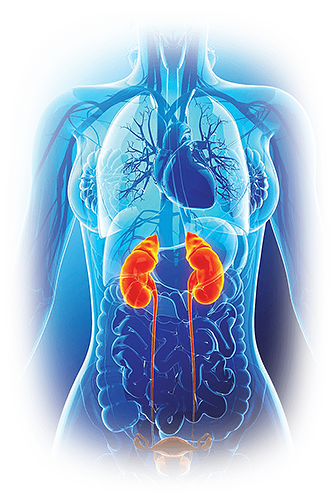Login
For Clinician Providers
For Clinician Providers
For Patients
Influenza B Appears Early in Flu Season
Influenza B – a strain of the influenza virus that usually appears late in the U.S. influenza season – has made an early appearance during the 2019-2020 influenza season, according to the U.S. Centers for Disease Control and Prevention (CDC).
Usually influenza B affects children and young adults and does not emerge until February or March, according to the CDC. But data from clinical laboratories that CDC uses to monitor influenza (commonly called the flu) activity show that between September 29 and December 21, influenza B was present in nearly 71% of positive influenza specimens, while 29% of positive influenza samples had influenza A. The reason for the early presence of the unusually large proportion of influenza B cases remains unclear. The CDC has noted that influenza started earlier than usual in 2019, beginning in the southern United States.
As of January 3, 2020, the CDC has estimated that 6.4 million Americans contracted influenza A and B, causing 55,000 hospitalizations and 2,900 deaths. These numbers are similar to what has been seen at the peak of other recent influenza seasons.
Diagnosing Influenza
Healthcare practitioners can often diagnose and treat influenza without testing in people with typical influenza signs and symptoms. However, healthcare practitioners often order influenza tests for hospitalized patients and people at high risk for sometimes deadly complications, such as pneumonia. People at risk include pregnant women, young children, people 65 years and older, individuals with weakened immune systems, and people of any age with medical conditions like HIV, cancer, asthma, diabetes, kidney disease, or heart disease.
Flu tests also document its presence in the community and guide prevention efforts, especially in schools and nursing homes. Some tests can identify the type and strain of influenza virus, information that helps public health officials track the spread of influenza, find new strains of the virus, monitor for resistance to antiviral medications, and aid in formulating the next year’s influenza vaccine.
Rapid Influenza Diagnostic Tests (RIDT) administered in healthcare practitioners’ offices and at the bedside in hospitals can deliver results within 20 minutes, while other tests sent to laboratories give results the same day. However, these tests vary in their ability to detect all influenza strains.
Prevention
The most effective prevention is the annual influenza vaccine. Most people 6 months of age and older should get the influenza vaccine. Children, the elderly, immunocompromised individuals, and those with pre-existing lung diseases, are especially vulnerable. CDC recommends that people with allergies to eggs and other vaccine ingredients should discuss these conditions with their healthcare practitioners before getting the vaccine.
Current influenza vaccines protect against several subtypes of influenza A as well as influenza B and have an effectiveness that ranges from 40% to 60%. While some people who get vaccinated may still get influenza, vaccination may make the illness less severe.
Other prevention efforts help stop the spread of flu. They include staying away from people who are sick, staying home when you are sick, covering coughs and sneezes, and frequent handwashing. These tactics are important because otherwise healthy adults may be able to infect others beginning one day before symptoms develop.
People with influenza are most contagious in the first three to four days after their illness. Most people are contagious for up to seven days after becoming sick, but some, especially young children and those with weakened immune systems, might be contagious for an even longer time.
Treating Influenza
Most people who get influenza have mild to moderately severe illness and do not need medical care or antiviral drugs. But the CDC recommends that people who are very sick or at high risk for serious complications contact their healthcare practitioners.
The CDC recommends these individuals get prompt treatment with antiviral drugs. Studies show that influenza antiviral drugs work best when they are started within two days of getting sick. These drugs can help alleviate symptoms and limit the illness’s duration. The drugs may also reduce risk of ear infections in children, respiratory complications requiring antibiotics, and hospitalization in adults.
Source:
Mike Stobbe. US Flu Season Arrives early, Driven by An Unexpected Virus. Associated Press, Available online at https://apnews.com/fe93a8ee8bb367874f76c986d0353b7a. Published December 6, 2019. Accessed January 5, 2020.
Weekly U.S. Influenza Surveillance Report. U.S. Centers for Disease Control and Prevention (CDC). Available online at https://www.cdc.gov/flu/weekly/index.htm. Last updated January 3, 2020. Accessed January 5, 2020.
Key Facts About Influenza (Flu). CDC. Available online at https://www.cdc.gov/flu/about/keyfacts.htm. Last reviewed September 13, 2019. Accessed January 5, 2020.
Who Should and Who Should NOT get a Flu Vaccine. CDC. Available online at https://www.cdc.gov/flu/prevent/whoshouldvax.htm. Last reviewed: October 11, 2019. Accessed January 5, 2020.
People at High Risk for Flu Complications. CDC. Available online at https://www.cdc.gov/flu/highrisk/index.htm?CDC_AA_refVal=https%3A%2F%2Fwww.cdc.gov%2Fflu%2Fabout%2Fd….. Page last reviewed August 27, 2018. Accessed January 5, 2020.
What You Should Know About Flu Antiviral Drugs. CDC. Available online at https://www.cdc.gov/flu/treatment/whatyoushould.htm. Page last reviewed April 22, 2019. Accessed January 5, 2020.
https://labtestsonline.org/news/influenza-b-appears-early-flu-season



